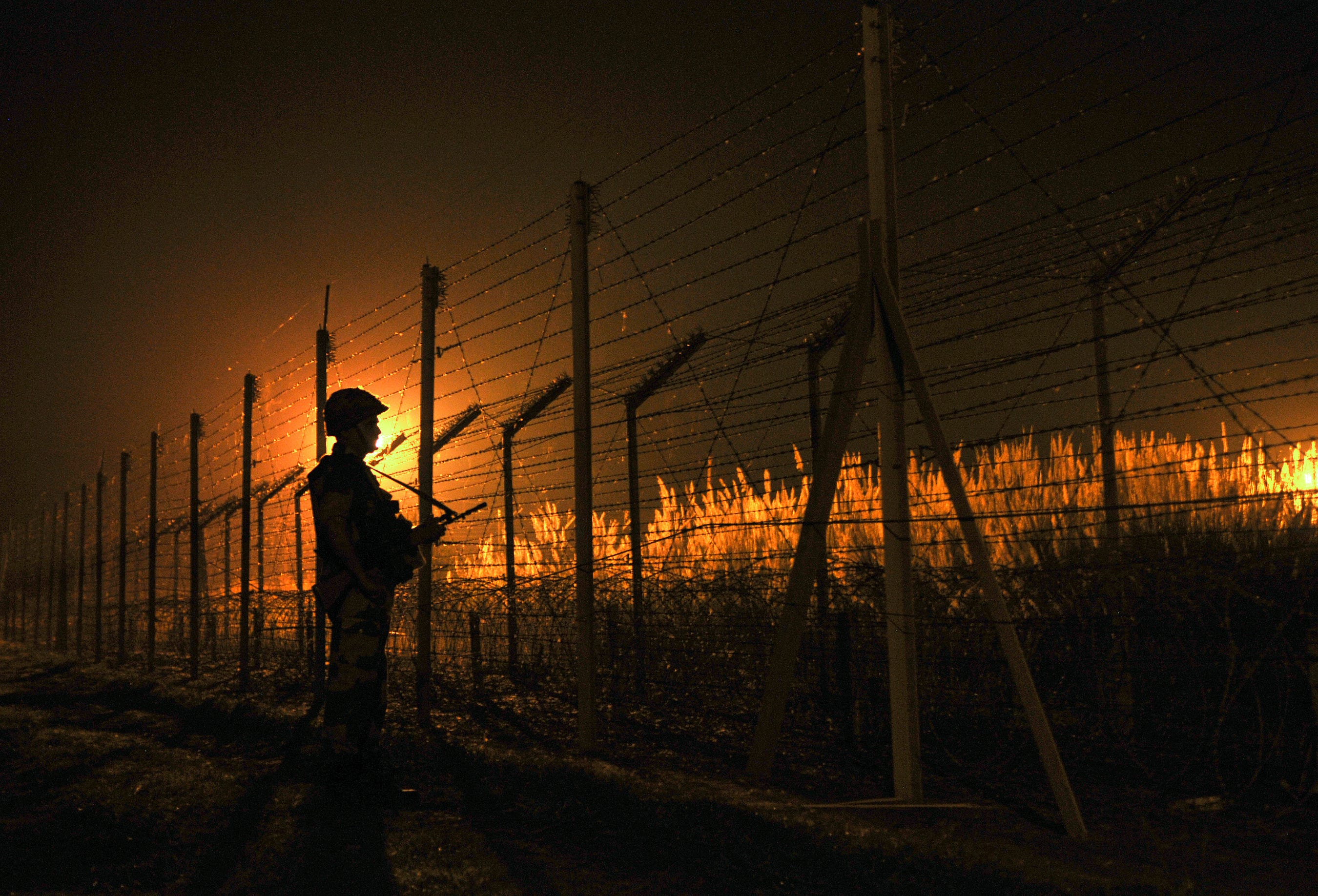 Recent days have seen the most dangerous confrontation between Pakistan and India for two decades. A suicide-bombing in Kashmir (by an Indian Kashmiri), followed by tit-for-tat sorties by Indian and Pakistani warplanes, have left the two nuclear-armed powers on the brink of a catastrophic stand-off. Why is Kashmir so often the flashpoint?
Recent days have seen the most dangerous confrontation between Pakistan and India for two decades. A suicide-bombing in Kashmir (by an Indian Kashmiri), followed by tit-for-tat sorties by Indian and Pakistani warplanes, have left the two nuclear-armed powers on the brink of a catastrophic stand-off. Why is Kashmir so often the flashpoint?
When the colonial power, Britain, withdrew from India in 1947 it left a legacy of carelessly or arbitrarily drawn borders. Tensions between India and China flare on occasion along India’s far north-eastern border, in the state of Arunachal Pradesh. Pakistan, too, is beset by difficult borders. Afghanistan, to the north, has long been a hostile neighbour. But the borders in Kashmir, where Pakistan, India and China all have competing claims, are the most contentious.
Come independence, it was clear that many Indian Muslims were determined to break off from the Hindu majority. It fell to a British civil servant, who knew nothing of the region, to draw a line of partition between territory that would become Pakistan and India. Pakistan was given Muslim-dominated areas in the north-west, plus territory in the east (which itself won independence as Bangladesh in 1971). The rulers of some disputed areas, notably Kashmir, were told to choose which country to join.
While Kashmir’s Hindu ruler prevaricated, hoping somehow to become an independent country, Pakistan’s leaders decided to force the issue. Since Kashmir was (and is) a Muslim-majority territory, Pakistan felt justified in seeing Pushtun warlords charge in from the north-west of Pakistan, late in 1947, to seize control of Kashmir. India, apparently invited by Kashmir’s ruler, responded by deploying its national army. It stopped the invaders from taking Srinagar, Kashmir’s capital, which is in the Kashmir valley, the most densely populated part of the territory.
The resulting line of control remains, by and large, the de-facto international frontier within Kashmir and in effect, if not in theory, is accepted by Pakistan and India. Huge numbers of soldiers remain in the area, though, as both countries profess to be the rightful authority of the rest of Kashmir. On the Indian side people have been living under the Armed Forces (Special Powers) Act since 1990, when an armed insurgency erupted with the covert support of Pakistan. The act legitimises draconian measures by security forces. Some 40,000 have died in the intervening years. Violence has declined this century, but the death toll has mounted again recently.
The situation as understood in Delhi, the Indian capital, as purveyed in the Indian press and as widely accepted by 1.3bn other Indians, is that brave Indian troops are waging a largely successful effort to crush a small but resilient band of Islamist terrorists who are operated by remote control from Pakistan. The situation as experienced in the Kashmir Valley, whose 7m people are nearly all Kashmiri-speaking Muslims, is rather different. In the absence of any political initiative from Delhi to respond to Kashmiris’ concerns, the heavy-handed efforts of half-a-million soldiers to crush anywhere from a few dozen to a few hundred armed militants are compounding a growing sense of alienation from India.
Consider, for example, an incident from last May. Security forces had trapped five armed rebels in a house during the night. When the shooting stopped at noon they were all dead. As happens with growing regularity during the Indian army’s search-and-kill operations in the Kashmir Valley, hundreds of villagers had gathered at the scene to try to protect the doomed fugitives. During the incident and in subsequent protests, police gunfire killed six more people, all civilians. Dozens more were hospitalised, many with shotgun pellets lodged in their eyes. Well over 1,000 people have been treated for similar eye injuries in recent years. The “martyrs” all turned out to be local Kashmiris and not, as has often been the case in the past, infiltrators from Pakistan. Tens of thousands thronged their funerals.
Indian democracy is not quite dead in the Kashmir Valley, but it is certainly ailing. Since the partition of India and Pakistan in 1947 called their fate into question, Kashmiris have been hostage to relations between the two. In its focus on the bigger picture, India has often flouted Kashmiri concerns. This trend has grown harsher since the Bharatiya Janata Party took power in New Delhi in 2014, vowing to end “appeasement” of Indian Muslims and to get tough on Pakistan. As Mohammed Ayoob, an Indian-American political scientist, lamented in the Hindu, an Indian daily, “If the political elites had the sagacity to solve or at least manage the problem ‘in’ Kashmir, the problem ‘of’ Kashmir would have lost its salience over time. Unfortunately, they did exactly the reverse.”
No comments:
Post a Comment